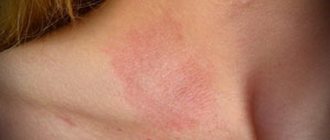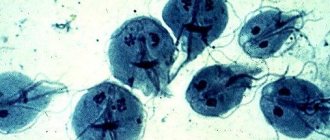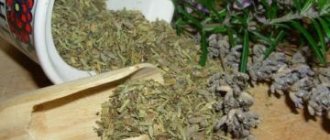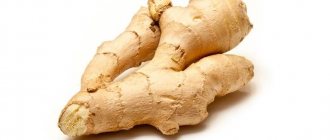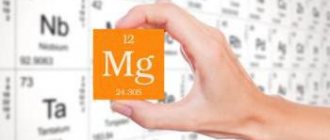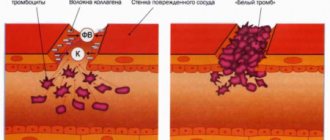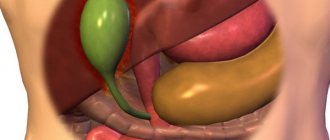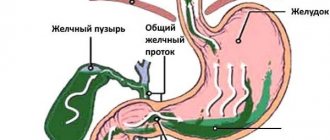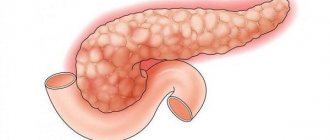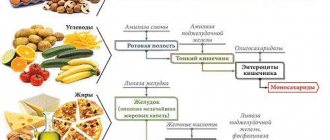Bile is a fluid produced and secreted by the liver that breaks down fats into fatty acids that can be absorbed by the body through the digestive tract. These are mainly cholesterol, bile acids (also called bile salts), bilirubin (a breakdown product or red blood cells), water, body salts (such as potassium and sodium), copper and other metals.
Bile is a fluid produced and secreted by the liver that breaks down fats into fatty acids.
What pathologies occur when there are disturbances in the process of bile formation?
Abnormal secretion production has the following consequences.
- Malfunction of the gastrointestinal tract, as a result of problems with digestion of food and constipation.
- Disruption of the lymphatic system and swelling. Due to the fact that fluid accumulates in the gastrointestinal tract, the natural balance between intracellular and intercellular spaces is disrupted, and fluid pressure increases. The swelling may be blue or purple.
- Increased blood acidity or change in acid-base balance. Absorption of nutrients into the blood occurs in the stomach and intestines. If the amount of bile or other digestive catalysts is not normal, it will affect the condition of the body.
- Disruption of the central nervous system. At first glance, the gastrointestinal tract has nothing to do with the nervous system. But this is far from true. The size, area, and length of our intestines are several times larger than the rest of the body. All organs are covered with nerve endings and form part of the nervous system. It turns out that the stomach contains more elements of the nervous system than the rest of the body. Resources for the functioning of the central nervous system are distributed unevenly; if digestion or bile formation is disrupted, the entire nervous system suffers.
Symptoms of impaired bile secretion production:
- pale skin color;
- changes in blood pressure;
- disturbance of urination and stool;
- heaviness in the stomach and intestines;
- weakness and drowsiness;
- loss of appetite;
- heaviness in the left hypochondrium;
- change in the smell and consistency of sweat (sweat looks like a sticky viscous liquid);
- bad breath, as a result of gases released during the digestion of food (the smell comes not from the mouth, but from the stomach, because food begins to ferment due to slow digestion).
Disturbances in secretion production lead to serious illnesses. Black bile is a substance secreted by the spleen. Its black color is due to its low water content, which results in the oxidation of the pigments bilirubin and biliverdin. The substantia nigra is a sign of congestion or liver disease, as a result of which fluid mixes with dying tissue and enters the stomach.
If there are disturbances in the functioning of the mucous membranes, liver secretions accumulate in the stomach or intestines. It stagnates and thickens, reducing the cross-section of the intestine. In this case, particles of digested food drown in a black viscous mass, gradually clogging the intestines.
Characteristic symptoms:
- bloating;
- nausea;
- difficulties with bowel movements and urination;
- unpleasant taste in the mouth, often after sleep;
- a feeling of heaviness in the stomach and a feeling of a foreign object filling the stomach.
At the first symptoms, it is recommended to consult a doctor for diagnosis. This problem is not always solved by simple gastric lavage and intestinal cleansing; in some cases, surgical intervention and subsequent therapy are required.
Bile is produced by liver cells; the fluid is collected through the ducts into one duct, after which it fills the gallbladder. After this, it enters the duodenum, where it performs its main function, helping to process food.
The gallbladder stores fluid and supplies bile to the digestive organs. Therefore, bile enters the duodenum only during food processing.
Bile is produced in the body constantly, but its amount can vary depending on food intake. During the day, 1-1.8 liters of bile are formed. After eating, the process of bile formation intensifies.
A sedentary lifestyle and poor diet cause health problems.
The following reasons can disrupt the process of bile formation:
- diseases of the digestive system;
- sedentary lifestyle;
- stress conditions, nervous disorders;
- eating large amounts of fatty foods;
- abuse of flour products;
- insufficient amount of fiber in daily diet;
- passion for fast food;
- liver pathologies;
- improper diet: 1-2 meals a day;
- a hearty dinner before bed.
In the presence of these reasons, there is a threat of diseases associated with the formation of bile.
What preventive measures will help prevent the occurrence of diseases associated with bile stagnation? Measures used in combination will be effective.
- proper nutrition;
- protection;
- active lifestyle, playing sports.
Special preparations are produced that increase the performance of liver cells and strengthen it. You can take medications as preventive measures only as prescribed by a doctor. There is no need to choose and take such drugs independently and uncontrollably; this can lead to malfunction of internal organs.
Without proper nutrition, treatment and prevention of pathologies associated with bile stagnation are impossible.
To ensure normal functioning of the gallbladder, preventive measures are necessary: a healthy diet, exercise.
Bile, produced in the liver, is required for human life. Improper lifestyle and malnutrition can cause disruption in the formation of bile in the liver, which leads to serious diseases. There are a number of preventive measures to prevent the occurrence of pathologies.
Bile is a special liquid, a secretion that is synthesized by the liver. It makes its way through the ducts into the gastrointestinal tract (into the duodenum) and is necessary for the normal digestion of food.
Excess or deficiency of bile, as well as disruption of its synthesis, leads to the development of dangerous diseases.
To understand its role in the human body, it is important to know what it is, why bile is needed, what ailments it can cause, and who to contact to diagnose disorders.
Bile, a viscous yellow substance, is synthesized by the liver. From there it flows into the gallbladder, where it is collected and, if necessary, included in the digestion process. There the color of the substrate and its concentration change.
The bile bladder is a reservoir in which it accumulates. When food enters the body, the required amount of this secretion penetrates the duodenum through the ducts, ensuring the natural process of digestion.
Types of bile are divided according to their location. The substance that accumulates in the gallbladder is called gallbladder bile, and that which comes from the liver is called hepatic bile. In the process of synthesis and movement, it changes not only its name, but also its acidity and composition.
The role of bile in digestion is the fermentation of substances and their absorption in the intestines. Its main functions, which are so important for the normal life support of the body, include the following:
- acceleration of fat absorption;
- suppression of the action of pepsin in gastric juice;
- formation of intestinal hormones;
- stimulation of mucus production;
- participation in the creation of micelles;
- activation of intestinal motility;
- launching rapid protein fermentation.
In addition to natural causes that do not affect the state of the body, the composition of bile changes under the influence of pathological processes, when the substrate begins to be produced more actively. There are several reasons for increased synthesis or its decrease.
The functions of bile, in addition to its direct purpose - helping in the digestion process - include disinfection of the intestines and waste in the stool.
Excess bile is more common than its deficiency and entails serious consequences for the body. External factors cause increased substrate synthesis by the liver.
Its excess also causes endocrine disorders, toxic or infectious liver damage.
But it is difficult to assess the value of bile in case of deficiency; its deficiency does not manifest itself with special symptoms, as happens with increased synthesis. But within the digestive system, dramatic changes are observed.
The intestines cannot normally absorb necessary substances and vitamins, which ultimately affects its function. Pathological changes develop, and the body suffers from a deficiency of important fats and amino acids.
When digestion is disrupted, fats do not break down into small particles, are not absorbed by the intestines and are deposited in the subcutaneous layer and on the surface of internal organs. The spleen, liver, intestines and heart are most affected.
Normally, the human liver synthesizes up to 2 liters of fluid per day.
This process, called choleresis, occurs without interruption, but cholekinesis - the flow of bile into the duodenum - starts in periods depending on the entry of food into the gastrointestinal tract.
If the stomach is empty, the secretion from the liver enters the gallbladder, where it can remain until the right occasion, and begins to be secreted when the stomach is filled with food.
Human bile is not just a secret that breaks down food into simple, easily digestible compounds, it is a substance that contains proteins, vitamins, amino acids and other compounds.
Mixing with the secretion of the glands, bile changes color, it becomes dark, and the concentration becomes thick and viscous. The task of this viscous liquid is to ensure rapid breakdown of food and act as an intestinal assistant.
Pigments determine the color of bile - they are products of the breakdown of hemoglobin and other porphyrin derivatives. The main bile component is bilirubin. This yellow-red coloring agent gives the liquid its characteristic tint. The green pigment biliverdin leaves only traces in the bile.
Why is obstructive jaundice dangerous?
Bilirubin is found in the blood and is normal. However, its maximum concentrations, as a rule, do not exceed 20.5 µmol/l.
With obstructive jaundice, its concentration in the blood begins to constantly increase and can reach several hundred micromol/l. Such a high level of bilirubin has a pronounced toxic effect on almost all biochemical processes, organs and systems of the body. In addition, in the presence of obstructive jaundice, neither surgical nor chemotherapy treatment of the underlying disease is possible. A further increase in bilirubin concentration leads to the death of the patient.
Although infusion therapy can somewhat “dilute” the concentration in the blood for a short time, the only way to reduce its concentration is to restore the outflow of bile from the liver.
What is bile, where is it produced, its composition
The bitter taste substance is green, brown and yellow. Its color is given by bile pigments (porphobilinogen, bilirubin), formed during the breakdown of red blood cells. Thanks to them, feces are colored in a specific color. The secretion emulsifies and breaks down fats, helping them digest and absorb. Promotes intestinal motility. The following types of bile are distinguished:
- Liver (young) is secreted directly into the intestines.
- The gallbladder (mature) is stored in the gallbladder and is secreted by it.
The composition includes main active and auxiliary substances. The main ones are primary and secondary bile acids. When combined with glycine and taurine, they form paired acids, which are considered “bile salts.” Excipients include bilirubin, phospholipids, proteins, water, bile pigments, mineral ions, and bicarbonates. The abundance of potassium and sodium ions contributes to the alkaline reaction of the secretion.
Bile flows from the gallbladder into the intestines.
The structure of bile has 3 fractions. Hepatocytes form the 1st and 2nd, bile duct epithelial cells - the 3rd. The 1st and 2nd fractions provide 75% of the total volume of the substance, performing a secretory function, the 3rd - 25%. The latter is formed due to the ability of epithelial cells to secrete digestive juice and the possibility of reabsorption of water and electrolytes from the common duct.
Bile is a biological fluid with a specific odor. It can be of varying thickness, yellow-brown or greenish in color and has a distinct bitter taste.
Bile is produced in liver cells - hepatocytes. It is quite liquid and has a light shade, for example, yellow. The liver continuously produces bile. Then it flows through special ducts into the reservoir - the gallbladder, which is a hollow sac with a capacity of 80-120 ml. Here it becomes more concentrated and viscous, and its color changes to darker, for example, brown or green.
| Component | Liver bile | Cystic bile |
| pH | 7,3-8,2 | 6,5-6,8 |
| percentage of water | 95-97 | 80-86 |
| bile acids, mmol/l | 35,0 | 310,0 |
| bile pigments, mmol/l | 0,8-1,0 | 3,1-3,2 |
| cholesterol, mmol/l | 3,0 | 25,0-26,0 |
| phospholipids, mmol/l | 1,0 | 8,0 |
| sodium | 165,0 | 280,0 |
| potassium | 5,0 | 15,0 |
| calcium | 2,4-2,5 | 11,0-12,0 |
| chlorine | 90,0 | 14,5-15,0 |
| HCO3 − | 45,0-46,0 | 8,0 |
In addition, bile contains various proteins, metal ions, enzymes and other biologically active substances.
Food stimulates the contraction of the gallbladder, as a result of which bile flows through the common bile duct into the duodenum, where it mixes with the rest of the intestinal juice and pancreatic secretions.
Bilirubin and biliverdin. Bilirubin is formed from hemoglobin molecules that enter the blood after the death of red blood cells. It is he who gives the appropriate color to the bile, because it itself has a red-yellow color. Biliverdin has a green tint and is found in bile in small quantities. Oxidizing in the intestines, bile pigments turn stool brown.
If for some reason a lot of bilirubin accumulates in the blood, it gives a yellow tint to the skin, eyeballs and changes the color of urine, which becomes similar to beer. In the body, bilirubin is present in two main forms - bound and unbound with glucuronic acid. Unbound (indirect) bilirubin in large quantities can penetrate the brain cells, staining its various parts and leading to a change in mental state in adults and a decrease in mental abilities in newborns.
Bile acids. This is a series of organic acids that are necessary to emulsify fats. Without emulsification, the process of their absorption in the intestines is impossible. Excreted during the day in the amount of 15-30 g, the overwhelming amount of these acids is absorbed back, and only 0.5 g is excreted in the feces.
Microorganisms and protozoa. Normally, bile is sterile. However, in some diseases, microorganisms or protozoa penetrate primarily from the intestines. The result is cholecystitis, an inflammation of the gallbladder. In this case, Proteus, Salmonella, Enterobacteriaceae, Klebsiella, Escherichia coli and even Giardia can be detected.
Microliths and stones. They are formed if the chemical composition of bile is disrupted: it should become more concentrated and saturated with cholesterol and bile salts.
Leukocytes, cells of the mucous membranes (epithelium). Normally present in small quantities. Their increase indicates inflammation of the gallbladder.
If bile remains in the gallbladder for a long time, it becomes more concentrated, and under unfavorable circumstances, the risk of stone formation increases. Therefore, you should ensure that your gallbladder is emptied regularly. To do this, it is necessary to avoid prolonged fasting or ensure that bile is removed from it in a timely manner.
In normal life, the most concentrated bile is observed after a night's sleep, so breakfast should be large enough to cause the gallbladder to contract and release bile into the duodenum.
They also help normalize the composition of bile or its separation:
- daily walking, moderate exercise;
- physically active lifestyle;
- good mood;
- drinking (at least 1.5-2 liters of fluid per day for an adult, unless contraindicated by a doctor);
- refusal of alcohol and heavy consumption of fatty foods, overeating.
The daily diet should be balanced and in most cases correspond to treatment table No. 5 according to Pevzner.
The functions of bile in the human body cannot be underestimated. The full functioning of all organs of the digestive system is impossible without its participation. Even minor deviations from the norm in the process of its production, composition, concentration or acidity entail changes in the body and general condition of a person.
In first place among the components in terms of percentage is water (about 96%). In second place are acids: cholic and chenodeoxycholic. It also contains other organic components, these are:
- acids: lithocholic, allocholic, deoxycholic;
- vitamins: A, group B and C;
- pigments;
- cholesterol;
- phospholipids;
- immunoglobulin forms A and M;
- bilirubin;
- metals;
- xenobiotics;
- lecithin.
The bulk of these components is found in the gallbladder bile. In the bile, after it remains in the bladder, impurities, suspensions and mucus appear, which are necessary for processing food.
The composition of bile and the ratio of its components change with excessive consumption of carbohydrates and fats, neuroendocrine pathologies, obesity, and a passive lifestyle.
Before the secretion enters the intestine from the liver, it passes through the common duct and temporarily accumulates in the bladder for subsequent movement. Disruptions to this well-functioning process occur at any stage of movement.
The delivery of bile is ensured by the layer of muscles that line the ducts and bladder. If their contractile functionality is debugged, there are no problems with movement and filling of intestinal secretions. With muscle dysfunction or problems with the mobility of the bile itself, dyskinesia develops. Symptoms are nagging pain on the right side at the level of the ribs, bloating and bitterness in the mouth.
There is a group of diseases that manifest themselves when problems with bile secretion or bile formation occur:
- Formation of calculi (gallbladder stones). They appear with lithogenic bile and when there is a deficiency of its enzymes. Lithogenic characteristics also appear with improper diet, eating large amounts of fat, disruption of metabolic and endocrine processes, and hypodynamic disorder. With stones, cholecystitis (inflammation in the bladder) develops, and the ducts become blocked.
- Steatorrhea. Develops with severe bile deficiency or its complete absence. Against the background of the disease, the transformation of fats and proteins stops, and they are excreted in their original form with feces.
- Reflux gastritis. GERD. The condition is characterized by the backflow of secretions into the esophagus or stomach. With reflux, it affects the upper layer of the mucous membrane of these organs, provoking its necrosis or necrotic changes. With GERD (Gastroesophageal reflux disease), the esophageal mucosa is affected due to an increase in its acidity.
When there are problems with bile formation, the entire body suffers, and especially the organs adjacent to the liver and gallbladder: spleen, pancreas, intestines, heart.
When the first symptoms of excess or lack of secretion appear, immediate medical intervention is needed. Determining the quality of gallbladder functions, studying bile and eliminating its disorders caused by pathological changes is carried out by a hepatologist and a gastroenterologist.
When the cause of the disease is a deviation from the norm of bile formation in the liver long before the liquid enters the digestive system, consultation with a hepatologist is required. If disturbances are detected during digestion, affecting the stomach, gland and intestines, therapy is carried out by a gastroenterologist.
But in order to cope with pathological processes, a nutritionist is also involved in the treatment. He adjusts the patient’s diet and gives advice regarding his lifestyle.
The functions of the gallbladder in the human body are the accumulation, concentration and excretion of bile when food is consumed.
Why a person needs a gallbladder can be briefly explained as follows: the degree of absorption of nutrients, and therefore the well-being and performance of the body, depends on the quality of its functioning.
Food goes through several stages of transformation before its components are absorbed. Bile produced by liver cells is directly involved in this process.
The gallbladder, the structure and functions of which are adapted to regulate digestion, is a hollow organ. Physiological purpose is the accumulation of fluid secreted by the liver, which is pushed into the intestine as needed through the duct.
What it is
Bile secretion
The secretion of liver cells is important in the process of changing digestion from gastric to intestinal.
The continuous flow of bile through the system is ensured by the pressure difference in its sections, the tone of the sphincters and the contraction of smooth muscle fibers of the ducts and gallbladder. Nervous and humoral regulation coordinates the process. Cholikinesis is regulated by conditioned and unconditioned reflexes through receptors in the mouth, stomach, and intestines using the vagus nerve. Humoral regulation refers to the influence of various digestive hormones on the biliary system.
When eating, conditioned and unconditioned stimuli stimulate the secretion of bile. The main one is the hormone cholecystokinin. The muscles of the walls of the gallbladder are influenced by hormones produced by the cells of the digestive organs under the influence of chyme. Excitation of nerve fibers triggers motility of the gallbladder and common bile duct with simultaneous relaxation of the sphincter of Oddi. The sphincter relaxes, the walls of the bladder contract and the bile concentrate freely enters the intestine, where emulsification occurs. The process lasts 3-6 hours. Irritated sympathetic nerve fibers relax the gallbladder muscles and contract the sphincter of Oddi. Bile secretion stops.
Functions of bile
The main functions of bile are the completion of digestive processes in the intestines. It is produced by hepatocytes (liver cells), and then passes through the tubules into the gallbladder and duodenum.
The amount of bile produced per day averages 1200-2000 ml. It collects in the bladder, and with the start of eating food it begins to move towards the intestines. There are two types of bile: hepatic (young) and bladder (mature).
What it is?
Bile is a clear, slightly viscous liquid. Its shade can be yellow, greenish or brown. Its smell is specific, and its taste is bitter. If bile remains in the bladder for a long time, then mucus and other impurities appear in it, which are necessary for processing the incoming food.
If there is a lack of secretion or a violation of its composition, it becomes difficult to digest fat and proteins. This is why many people suffering from gallbladder problems become overweight.
98% of the composition of bile is water. The remaining 2% is occupied by other components:
- acids;
- vitamins;
- salt;
- enzymes;
- pigments.
Most of the organic composition of bile is occupied by acids, especially chenodeoxycholic and cholic. Secondary acids, also included in bile, include ursodeoxycholic, deoxycholic, lithocholic and allocholic acids. They interact with glycine and taurine.
In addition, the bile composition is represented by the following organic components:
- metal ions;
- phospholipids;
- bilirubin;
- protein compounds;
- biliverdin;
- lecithin;
- vitamins A, B and C;
- mucins;
- cholesterol.
In the gallbladder bile secretion, the concentration of these components is five times higher than in the liver secretion.
The liver secretes bile continuously. Thanks to hepatocytes, certain substances that enter the bile capillaries from the blood are filtered. Then the reabsorption of salts and water occurs, which helps to finally form the composition of the secretion. This process occurs in the bile ducts and bladder.
The bile that enters directly into the intestines is called hepatic bile. However, most of it is secreted into the gallbladder. The cystic secretion accumulates, acquiring a higher concentration and density. Its color also changes, it becomes darker.
The flow of bile does not occur on an empty stomach. Only after eating food is the substance released into the duodenum.
Properties
Why is bile needed in the human body? First of all, it has a strong antimicrobial effect. Thanks to this, the substance protects organs from pathogenic microorganisms and viruses. But if the concentration of bile is disturbed, changes begin in the body itself.
For example, when the acid level increases, the antiseptic property of the secretion degenerates into a destructive one. Increased acidic flora destroys all useful substances and corrodes internal organs.
A change in the amount of bile components occurs due to abuse of fatty foods, a sedentary lifestyle and toxic effects on the liver.
The main bile functions include:
- breakdown of fats;
- digestion of food;
- destruction of pathogens in the intestines;
- assistance in the production of micelles;
- dissolving fatty acids and improving their absorption;
- activation of the production of gastrointestinal hormones;
- activation of small intestinal motility;
- neutralization of the negative effect of inactive acid, which is part of the gastric juice, due to which the intestines are protected;
- improving the absorption of substances that are insoluble in water (amino acids, fatty acids and vitamins);
- stimulation of mucus production;
- preventing the combination of protein components and bacteria;
- preservation of beneficial microflora;
- participation in the formation of feces.
Bile secretion is of great importance for human health. Its lack in the intestines is called “hypocholia”, and the absolute failure of the secretion to enter the organ is called “acholia”.
With such pathologies, insoluble vitamins, fatty acids and fats cease to be absorbed, as a result of which most of the fat begins to be excreted from the body along with feces, and lipid residues compact the food bolus located in the intestine, thereby preventing the action of enzymes on it.
Then intestinal clogging, constipation and excess weight problems begin. Then toxic poisoning of the body is possible.
If the amount of secretion produced decreases or is completely absent, a person may develop serious illnesses:
- Steatorrhea.
- Gallstone disease.
- Gastroesophageal reflux disease (GERD).
Steatorrhea
One of the functions of bile secretion is the emulsification of fats. When it stops entering the small intestine, the absorption of fats stops, so they are excreted from the body along with feces. The same phenomenon is possible with a lack of bile acids, i.e. violation of the composition of bile.
Signs of steatorrhea
The stool becomes light-colored (white or gray). This pathology is called “steatorrhea”. It causes a deficiency of vitamins, fatty acids and some fats.
One of the main reasons for the appearance of this pathology is disturbances in the composition of bile. It becomes unbalanced. Such a secretion is called lithogenic. It obtains similar properties from constant poor nutrition, when a lot of food with animal fats is consumed.
Also, the composition of bile is disrupted due to endocrine diseases, failure of lipid metabolism, liver damage due to infection or toxins.
This pathology is also called reflux gastritis. With it, secretions flow back into the stomach or esophagus. Sometimes it gets on mucous surfaces, as a result of which necrobiotic-type lesions develop.
The main reason for the development of GERD is the damaging effect on the esophageal mucosa caused by an increase in pH levels.
Recommendations
To maintain a normal amount of bile production and good functioning of the digestive system, it is recommended to adhere to the following rules:
- Exercise regularly to provide the body with the necessary physical activity, which helps stimulate the production of secretions.
- Stick to proper nutrition, i.e. refuse or limit the intake of fried, salty and fatty foods, and also increase the amount of grains, fresh fruits and vegetables consumed.
If the amount of bile produced is normal, then the correct and uninterrupted functioning of the intestines is maintained, metabolism is normalized and the immune system is strengthened.
Summing up
Bile plays an important role in the functioning of the human body, especially in the digestive system. The secretion is produced by the liver and then accumulates in the gallbladder. It is of great importance for the whole body. In addition to digestion, bile also takes part in the motility of the small intestine and stimulation of secretory function.
Judging by the fact that you are now reading these lines, victory in the fight against liver diseases is not yet on your side...
Have you already thought about surgery? This is understandable, because the liver is a very important organ, and its proper functioning is the key to health and well-being. Nausea and vomiting, a yellowish tint to the skin, bitterness in the mouth and unpleasant odor, dark urine and diarrhea... All these symptoms are familiar to you firsthand.
What it is
Produced by hepatocyte cells in the liver. First, it fills the bile ducts, then the bladder and duodenum. The liver produces up to 1500 ml of this substance per day. Bile secretion is a continuous process.
The entire volume of secreted secretion accumulates in the gallbladder. It acts as a storage tank, providing the intestine with the amount of bile necessary for digesting food. Bile excretion occurs only at the time of feeding, and begins after 5-12 minutes. after it started.
The fluid accumulated in this organ is called vesical. It is ripe and distinguished by acidity, density and color.
The body produces 10-13 ml of bile per 1 kg of human weight. An adult with normal weight produces up to 1300 ml of secretion per day. This process is continuous, its intensity fluctuates throughout the day.
Bile acidity
The acidity (pH) of bile depends on its type. Thus, the acidity of liver secretion is 7.2-8.1 with a relative density of 1.007-1.015.
This indicator is lower for bladder bile - 6.2-7.1 with a density of 1.024-1.047. This pH difference is explained by the reduced amount of bicarbonates in it.
The functions of bile in the human body are interconnected with the functioning of the organs of the gastrointestinal system. Its role is to ferment compounds and absorb them in the intestines during digestion.
It participates in the following enzymatic reactions:
- dispersing fats;
- formation of hormones in the intestines;
- production of mucus and micelles;
- suppression of pepsin;
- activation of motility and tone of the small intestine;
- preventing proteins from sticking to bacteria.
When understanding what functions it performs in the body, you should also note:
- Participation in metabolic processes.
- Antiseptic effect on the intestines and disinfection of feces.
- Necessary for the absorption of water-insoluble fatty acids, amino acids and vitamins.
- Supply of intestines with bile.
- Participation in the synthesis of synovial fluid.
Consequently, it is thanks to this secretion that the digestive process, which began in the stomach, then successfully continues and is completed in the intestines.
Component composition
Not everyone knows what exactly the gallbladder does? What is the role of bile in the human body? What is it for?
- improves the functioning of pancreatic juice;
- dissolves fats entering the digestive system;
- helps the absorption of vitamins and nutrients;
- participates in intestinal function.
The main function of the liver is related to the breakdown of fats in the body. Without it, the body cannot process foods containing fat.
Clinical relevance
Bile is necessary for the breakdown and absorption of fats. Thanks to it, the digestive system digests fatty foods. If the secretion is not produced or does not enter the intestines, a pathological condition develops - steatorrhea. Symptoms of the disease: fats are excreted unchanged in the feces, feces acquire white and gray shades. The proportion of fats excreted in feces is 5 g and above. Useful components from food are not received enough, the body suffers from their deficiency.
For the absorption of water-insoluble fatty acids, cholesterol, calcium salts, increased protein and carbon hydrolysis, resynthesis of triglycerides at the cellular level is achieved through bile. Its activity during digestion at the parietal level secures enzymes on the inner walls of the intestine. The secretion of the pancreas, gastric mucus, the work of the small intestine, proliferation, and desquamation of pseudostratified epithelial cells are stimulated by bile in the human body. It is needed to prevent fermentation and rotting of waste products in the intestines.
How to get rid of bile stagnation
First of all, you need to change your diet to improve your health.
Dietary rules for gallbladder diseases:
- limit the consumption of fried foods;
- do not eat spicy food;
- exclude carbonated drinks;
- do not eat fatty foods;
- It is recommended to eat the dishes warm;
- choose dairy and fermented milk products with a low fat content;
- It is preferable to add cold-pressed vegetable oils to dishes;
- Alcoholic drinks are not allowed;
- follow the correct diet, eat at least 4-5 hours a day;
- do not overeat;
- When preparing, use gentle methods: boiling, baking in the oven, steaming;
- limit the consumption of strong tea, coffee, cocoa;
- add a variety of porridges to the daily menu, for example, oatmeal, rice, semolina;
- drink more compotes, herbal teas, decoctions.
In addition, there are a number of products that have choleretic properties:
- celery;
- spinach;
- beet;
- tomatoes;
- fruits, berries, vegetables with a lot of pectin;
- citrus.
Traditional medicine has been using recipes for centuries that relieve bile stagnation.
Choleretic drugs:
- dandelion;
- immortelle;
- birch leaf;
- strawberries;
- corn silk;
- sagebrush;
- calamus root.
As a rule, the course of herbal treatment is 2 weeks.
If there is stagnation of bile, it is recommended not to self-medicate, but to seek help from a specialist. A gastroenterologist deals with pathologies of the gallbladder, who will make a diagnosis based on the studies and tests performed.
Components
Bile refers not only to secretion, but also performs many excretory functions. Its composition includes multiple substances of endogenous or exogenous nature, protein compounds, acids and amino acids, and a rich vitamin complex. Bile consists of three main fractions, two of which are the result of the activity of hepatocytes, and the third is created by the epithelial structures of the bile ducts. The important components of bile include the following components:
- water (up to 80%);
- bile salts (about 8-10%);
- mucus and pigments (3.5%);
- fatty acids (up to 1-2%);
- inorganic salts (about 0.6%);
- cholesterol (up to 0.3-.0.4%).
Considering the two main types of bile - hepatic and bladder, the constituent components of both types are different. Thus, in the bladder secretion, various salts are significantly higher, and in the liver secretion there are more other components: sodium ions, bicarbonates, bilirubin, lecithin and potassium.
Important! The composition of bile secretion includes a large number of different bile acids, because it is bile that emulsifies fats. It is the production of bile acids that will allow the destruction of cholesterol and its compounds. To carry out the process of cholesterol catabolism, 17 acids of various types are required. At the slightest fermentation failure, a change in the function of bile occurs at the genetic level.
Prevention measures
To prevent liver disease, gall bladder disease, and impaired secretion production, it is recommended:
- maintain a proper diet;
- do not consume large amounts of simple sugars and carbohydrates;
- limit the consumption of alcoholic beverages and fatty foods.
Carbohydrates stimulate inflammatory processes in the human body. If there are malfunctions in the gallbladder or choleretic ducts, carbohydrates enhance them. This also applies to refined fried foods: the liver digests them, and this is an additional burden that reduces the production of bile secretion.
Agents that return secretion to normal.
- Garlic. Whole and granular, and the advantage of the granular form is that there is no bad breath after consumption.
- Choleretic pharmaceutical preparations. They mainly consist of wooden elements and do not cause harm to the body, because... the incidence and intensity of side effects are reduced.
- Weak medications that are available in pharmacies without a prescription.
Potent drugs:
- Allohol is a garlic-based drug that has a complex effect on the body and the state of the bile ducts, restores the function of bile fluid secretion;
- Holosas has a positive effect on the condition of the gallbladder (it is recommended to take it in liquid form, so it is absorbed much faster);
- Gepabene and Karsil are drugs aimed at maintaining normal bile secretion and restoring its enzyme profile.
Treatment highlights
Therapeutic tactics for diseases associated with bile secretion function depend on the diagnostic results. Choleretic medications may be prescribed. They are divided into the following groups:
- choleretics - stimulate the liver function to produce secretions;
- cholekinetics – improve motility of the gallbladder;
- Cholespasmolytics - relax the excretory valve of the gallbladder;
- drugs that prevent the formation of stones.
A mandatory requirement for conservative treatment of bile secretion function is a strictly balanced diet, physical activity and strict adherence to the instructions of the attending physician.
| 14,5 — 15,0 | |
| Hydrocarbonates (HCO3 − ) | 45 — 46 |
How is bile examined?
To find out your bile composition, you should undergo duodenal intubation. To do this, after special preparation of the patient, a probe is inserted into the duodenum and the contents of the lumen of this intestine are taken for analysis, which is extracted in 5 phases:
- Fraction “A” is a mixture of bile with duodenal juice (20-30 minutes).
- Closing phase of the sphincter of Oddi. There is no bile in the contents (up to 6 minutes).
- Bile flow from extrahepatic bile ducts (3-4 minutes).
- Portion “B” – bladder bile (20-30 minutes).
- Portion “C” – liver bile (remaining time after the end of phase No. 4).
As a rule, a referral for duodenal intubation can be obtained from a general practitioner, family doctor, gastroenterologist or surgeon.
At the discretion of the doctor, this procedure is usually prescribed for diseases of the liver, gallbladder, gastroduodenitis, pancreatitis, etc. It must also be undergone in a comprehensive examination with FGDS, ultrasound or MRI if the following complaints appear:
- pain in the right hypochondrium;
- change in color of stool;
- the appearance of yellowness of the skin, sclera, palms;
- digestive disorders - bloating, constipation, diarrhea, flatulence;
- bitterness in the mouth, nausea, heartburn, belching, etc.
Structure of the gallbladder
The gallbladder is a hollow organ that resembles an oval or pear-shaped sac in appearance. Its average volume is 50 ml. The gallbladder is divided into three parts:
- bottom – directed forward, protrudes beyond the edge of the liver and may be located in the anterior abdominal wall;
- body - the middle part of the organ;
- neck - a narrowed end that acts as an anastomosis for the bile duct.
The walls of the gallbladder are covered with muscular, serous and mucous elastic membranes. The internal cavity of the organ is lined with mucous tissue that forms folds. The fundus is the widest part of the gallbladder. In thin people, this area is easily palpated in the right hypochondrium. The body, according to its anatomical structure, smoothly passes into the neck, where the bile duct is formed. Spiral folds – flaps – are formed there.
There is a noticeable expansion at the cervix - Hartmann's pouch - where bile stagnation often forms and stones form. The mucous membranes are closely combined with muscle tissue, cholecystitis progresses. Pain during the development of inflammation is classified as severe and acute. This is due to the presence of many nerve endings in the organ and in the bile ducts. Why you need a gallbladder, you need to figure it out.
Cholelithiasis
This pathology may occur due to an unbalanced composition of bile. This bile is called lithogenic. It can acquire such properties due to regular errors in the diet, namely if animal fats predominate in the food. The functions of liver bile can be impaired as a result of endocrine diseases. In addition, this liver secretion can acquire lithogenic properties as a result of lipid metabolism disorders, which, as a rule, are accompanied by an increase in the patient’s body weight. Changes in the composition of bile can also be caused by infectious and toxic liver damage or an insufficiently active lifestyle (physical inactivity).


